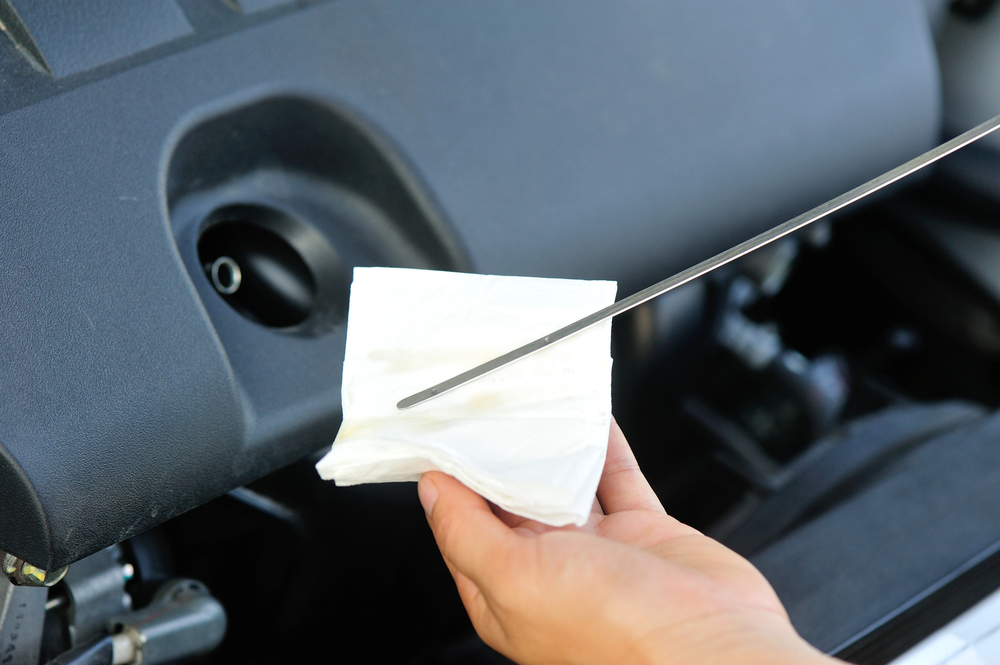What Should You Look for in a Used Car’s Maintenance History?
Valerie Raskovic
Apr 01, 2025
If you’re in the market for a pre-owned vehicle read this article before you buy!
Buying a used car can be a grueling process full of pitfalls and costly decisions. In an effort to aid the buyer in making a wise decision we have compiled some basic things you must check to gain a full idea of the vehicle’s true maintenance history. Keep in mind a well-maintained car is more likely to perform reliably and last longer, reducing the risk of unexpected and costly repairs. Understanding what to look for in a used car's maintenance history may help ensure you are not stuck with costly repair bills shortly after making the purchase. It may also help aid your decision making process as you will be able to weigh the pros and cons of each vehicle not just by price but also based on its condition and overall value.
Importance of Maintenance History
A car's maintenance history is a record of all the services, repairs, and inspections it has undergone throughout its life. This history can provide valuable insights into the car's condition and the care it has received. A car that has been regularly maintained is likely to have fewer issues and a longer lifespan. Conversely, a car with a poor maintenance history may have hidden problems that could lead to significant expenses and below average reliability.
What to Look For
1. Full-Service Records
The first thing to look for is a complete set of service records. These records should include:
- Service Dates and Mileage: Each entry should note the date of the service and the car's mileage at the time. This helps you understand the frequency of maintenance and whether the car has been driven more than it should have been between manufacturer recommended service intervals.
- Types of Services Performed: The type of services performed, such as oil changes, tire rotations, brake inspections and fluid checks, should be clearly documented. Regular oil changes for example, are crucial for a car's engine health. Also look for other important common service items like timing belt service. The best thing to do is to familiarize yourself with the specific year, make and model vehicle you intend to purchase. Contact your local dealer specializing in the type of vehicle you intend to purchase to get a better idea of which important and costly services are required at which mileage and duration markers. On some vehicles a timing belt services may be among the more costly items that requires regular services. For example, if a vehicle requires a timing belt replacement at every 100,000 miles or 10 years you will know that if the vehicle you intend to purchase have reached any one of those 2 markers. It will be crucial to check if the timing belt service was ever performed before committing to buying the vehicle.
- Service Provider: Knowing where the car was serviced can give you an idea of the quality of the service. Dealerships and established reputable independent mechanics are generally more reliable and may provide a higher quality of services.
2. Regular Oil Changes
Oil changes are amongst the most important maintenance items. If you want the engine to live a long time, then regular oil changes are a must. They help keep the engine clean and lubricated, reducing wear and tear. Look for records that show the car has had oil changes at regular intervals, typically every 5,000 to 7,500 miles, depending on the manufacturer's recommendations.
3. Major Service items
As mentioned above timing belt is amongst the big ones, as the timing belt service procedure requires a lot of labor and precise calibration and should follow a very strict scheduled service guideline. In some cases, people fail to perform the timing belt service in a timely matter and end up critically damaging the engine requiring very expensive engine replacement. Similar to timing belt replacement service there may be other major service items on your vehicles. Components such as water pumps, belt tensioners, timing chain guides all have a predicted lifespan, and you must ensure that the lifespan of those major engine components are not exceeded. A lot of the reputable shops sometimes place a service sticker on the engine itself to indicate when a major service was performed. However, if you do not see a sticker on the engine itself it does not necessarily mean the service was not performed. This is why we urge you to request for the seller to furnish all the service receipts and documents. In addition, be sure to run a full Vehicle History Report prior to committing to the purchase.
4. Fluid Checks and Replacements
Vehicle fluids can tell a lot about the vehicles condition. Do not be fooled by freshly flushed coolant and clean and clear oil on the actual engine oil dip stick. Regular checks and replacements of other fluids, such as transmission fluid, coolant and power steering fluid, are important for the car's overall health. Ensure the records show that these fluids have been checked and replaced as recommended.
5. Coolant system and Serpentine belt service
Be sure that the coolant system lines have been inspected and the cooling system is free of any leaks or debris in the reservoir tank. Belt inspections are crucial for preventing breakdowns. Look for records that show that accessory components such as belt tensioners, serpentine belts and accessory belts have been inspected and replaced at manufacture recommended intervals.
6. Tire Rotations and Alignments
Tire rotations and alignments are essential for maintaining even tire wear and ensuring the car handles well. Regular tire rotations (every 5,000 to 7,500 miles) and alignments (as needed) can extend the life of your tires and improve fuel efficiency.
7. Brake Inspections and Repairs
Brake systems are critical for safety. Look for records of regular brake inspections and any necessary repairs, such as brake pad replacements, rotor resurfacing or brake fluid flushes. These services should be performed as recommended by the manufacturer or as needed based on the car's condition.
8. Air Filter and Spark Plug Replacements
Although, air filters and spark plug replacement is not amongst the pricier service items, they are often overlooked. These components are essential for the car's performance. Regular replacements of these components can extend the engines lifespan, improve fuel efficiency and engine performance. Look for records that show these tasks have been performed.
9. Battery Replacements
A car's battery is a critical component that can fail without warning. Look for records of battery replacements and inspections. A battery should typically be replaced every 3 to 5 years, depending on usage and environmental conditions.
10. Recall and Safety Inspections
Check if the car has been subject to any recalls and whether those recalls have been addressed. Safety inspections, such as those required by state regulations, can also provide valuable information about the car's condition.
How to Verify Maintenance History
There is no single way to verify a vehicles full maintenance history. The best approach is a 3-part approach:
- Compare seller provided documentation to the Owner’s Manual and Service Guide
The car's owner's manual and service guide can provide a checklist of recommended maintenance tasks and intervals. Compare the car's maintenance history documents provided by the seller to these recommendations to ensure all necessary services have been performed.
- Ge a Vehicle History Reports
A comprehensive vehicle history report can provide you with a wealth of valuable data including maintenance records, accident history and other important events in the vehicles past life. These reports can be a valuable tool in your research.
- Professional Inspections
There is no substitute for an in-person professional vehicle inspection. Even with a detailed maintenance history, it's a good idea to have a trusted mechanic inspect the car. A professional can identify any issues that might not be apparent from the maintenance records alone. A professional auto technician should be able to identify if the car has undergone any major repairs or rebuilds, such as frame damage. As a rule of thumb major repairs are a red flag especially when they were preformed improperly.
A thorough review of a used car's maintenance history is a crucial step in the buying process coupled with a professional pre-purchase vehicle inspection. It can help you make a more informed decision and avoid potential issues.
Read more articles

